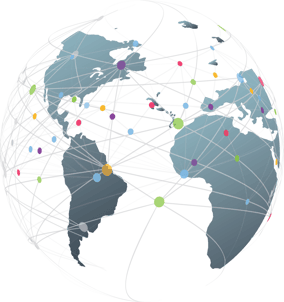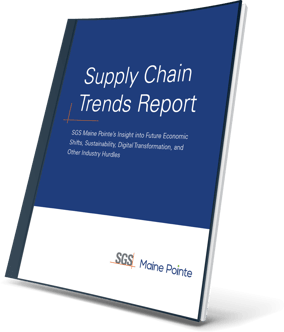Supplier Collaboration: Driving Goal Alignment & Win-Win Partnerships
The potential value of your suppliers goes beyond the goods and services they provide. When you foster collaboration with your suppliers they become:
- Your partners in meeting carbon reduction, safety, and other goals
- A source of information about marketplace trends and risks
- Idea generators, who can help you save money, reduce waste, and prepare for changes in supply and demand.
Those roles comes naturally when you have a mature procurement function with a robust supplier management process.
Share goals and expectations with suppliers
Collaboration with your suppliers on your goals and expectations requires:
- Strong internal communications in your organization, especially between planning, procurement, engineering, operations, and logistics
- Trusted communication with your suppliers that goes both ways.
Procurement cannot act alone; it needs to be part of the decision making process. For example, if engineering continually contacts suppliers with specification changes or if the specifications themselves are unclear, the suppliers will deliver products or services that are sub-par regardless of any actions by procurement. If the internal and external communication gaps are severe enough, the suppliers may desert you out of frustration before you have a chance to desert them for poor performance.
By contrast, a collaborative relationship with suppliers is based on clear and frequent communication and the development of trust. Given that atmosphere, suppliers may be motivated to give your company preferential treatment and to share ideas. For example, if you bring in suppliers at the start of the design process rather than the end, those suppliers may be able to recommend ways to reduce costs, for example, by sourcing lower-cost raw materials or by sourcing parts you are currently making. Their efforts may reduce your cost of goods sold (COGS).
When suppliers know what is expected of them, they will try to meet the standards you set. A mature procurement function evaluates your suppliers regularly against your critical goals, such as lead time, quality, and on-time in-full (OTIF) delivery. But procurement should also consider how those standards affect your suppliers. For example, if cost-cutting is a goal, you want to be careful not to undermine your suppliers; forcing them into bankruptcy is a lose-lose.
Suppliers cannot meet your goals until you are open about them. They are also more likely to share accurate information about their capacity and capability constraints if they feel you are honest with them about your needs.
Develop win-win relationships with your suppliers
A win-win relationship with your suppliers:
- Reduces your risks
- Adds to your information sources for data analytics
- Share real-time information you need
Ally-sourcing identifies suppliers that support your commercial and operational goals in countries that limit your political, social, economic, and environmental risk. If one of your goals is compliance with your country’s regulations on carbon emissions, then choosing a supplier located in a country with similar regulations would be advantageous to you both. That supplier might be more willing to collaborate on waste reduction, finding alternative raw materials, or invest in carbon capture, use, and storage (CCUS) technologies.
Your supplier is likely supplying other companies and is in contact with other suppliers in the industry. That makes your supplier a worthwhile source of information in supply and demand forecasting. The more data you access, the more accurate your predictive, spend, and market analytics. In addition, by sharing your predictive analytics with your suppliers, you help them avoid extra inventory or prepare for a surge in demand, again benefitting both of you.
Many suppliers are open to technology which allows data sharing. You and your suppliers would collaborate on choosing the technology platform and making a real-time exchange of data. Those technologies include real-time information on the location of expected supplies in transit; alerts on a port closing or other logistics problem; or predictions of arrival time. In return, when a technology or process works to increase productivity and timeliness in your own company, it may very well be worth sharing with your suppliers.
Three must-haves for a collaborative relationships
Transparency and communication are the primary ingredients for a value-added collaboration with suppliers, but you also need:
- A robust procurement management operating system, so that supplier relationship management, negotiation, and optionality are active and ongoing
- Periodic meetings with suppliers to discuss goals, mutually advantageous initiatives, and problems that could escalate, such as excessive change orders or failure to meet OTIF objectives
- Standards and protocols for controlling data flow, intervening in or changing a supplier relationship, and keeping procurement in the decision making loop.
Collaboration with suppliers moves beyond supplier management—although that is still necessary—to drive goal alignment and win-win initiatives in economic, political, social, and environmental arenas. A mature procurement function recognizes their ongoing role in fostering supplier collaboration and is recognized internally as a strategic partner. Underpinned by clear and ongoing communication, your suppliers become a critical source of ideas and information and help you gain visibility in your end-to-end supply chain.
Related Resources
Ready to improve your collaboration with suppliers?

Talk to us
From rapid sprints for short-term gains to transformation for competitive advantage we are here to get you there.
Schedule a discussion
Submit this form to speak to an SGS Maine Pointe representative.
Prefer a call? (781) 934 - 5569




